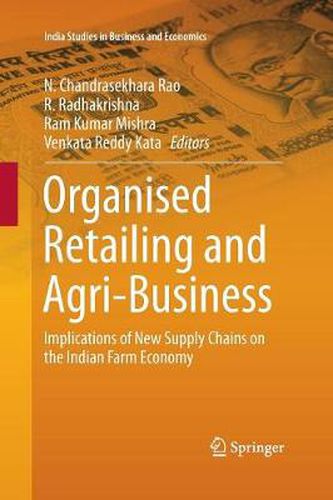Readings Newsletter
Become a Readings Member to make your shopping experience even easier.
Sign in or sign up for free!
You’re not far away from qualifying for FREE standard shipping within Australia
You’ve qualified for FREE standard shipping within Australia
The cart is loading…






This title is printed to order. This book may have been self-published. If so, we cannot guarantee the quality of the content. In the main most books will have gone through the editing process however some may not. We therefore suggest that you be aware of this before ordering this book. If in doubt check either the author or publisher’s details as we are unable to accept any returns unless they are faulty. Please contact us if you have any questions.
This book examines the performance of organized retail chains supplying the agri-input and output services in terms of achieving their objective of utilising collective bargaining power in the marketing of their agricultural produce, integrating empirical experience from India and other selected developing countries. The scenario of marketing for agricultural products has been undergoing rapid changes with the rise of organised retailing (the Indian term for ‘supermarkets’), a process that is likely to accelerate in years to come, with India being on the threshold of a supermarket revolution. In fact, India is referred to as the ‘final frontier’ in the development of supermarkets. The growth of supermarkets in India is faster than that in China, which is also witnessing an exponential growth as part of the third wave of supermarket diffusion.
The book investigates the links between organised retailing and farmers and farming in India. Apart from raising issues of equity, inclusion and problems in policy framework, it also discusses policy interventions that are essential in order to make the development of organised retailing more inclusive and beneficial to the farming community and agricultural sector. The book further serves as a guide for policy makers, helping them to select the right kind of interventions to balance growth with equity as market forces penetrate deeper into the agricultural marketing space.
$9.00 standard shipping within Australia
FREE standard shipping within Australia for orders over $100.00
Express & International shipping calculated at checkout
This title is printed to order. This book may have been self-published. If so, we cannot guarantee the quality of the content. In the main most books will have gone through the editing process however some may not. We therefore suggest that you be aware of this before ordering this book. If in doubt check either the author or publisher’s details as we are unable to accept any returns unless they are faulty. Please contact us if you have any questions.
This book examines the performance of organized retail chains supplying the agri-input and output services in terms of achieving their objective of utilising collective bargaining power in the marketing of their agricultural produce, integrating empirical experience from India and other selected developing countries. The scenario of marketing for agricultural products has been undergoing rapid changes with the rise of organised retailing (the Indian term for ‘supermarkets’), a process that is likely to accelerate in years to come, with India being on the threshold of a supermarket revolution. In fact, India is referred to as the ‘final frontier’ in the development of supermarkets. The growth of supermarkets in India is faster than that in China, which is also witnessing an exponential growth as part of the third wave of supermarket diffusion.
The book investigates the links between organised retailing and farmers and farming in India. Apart from raising issues of equity, inclusion and problems in policy framework, it also discusses policy interventions that are essential in order to make the development of organised retailing more inclusive and beneficial to the farming community and agricultural sector. The book further serves as a guide for policy makers, helping them to select the right kind of interventions to balance growth with equity as market forces penetrate deeper into the agricultural marketing space.